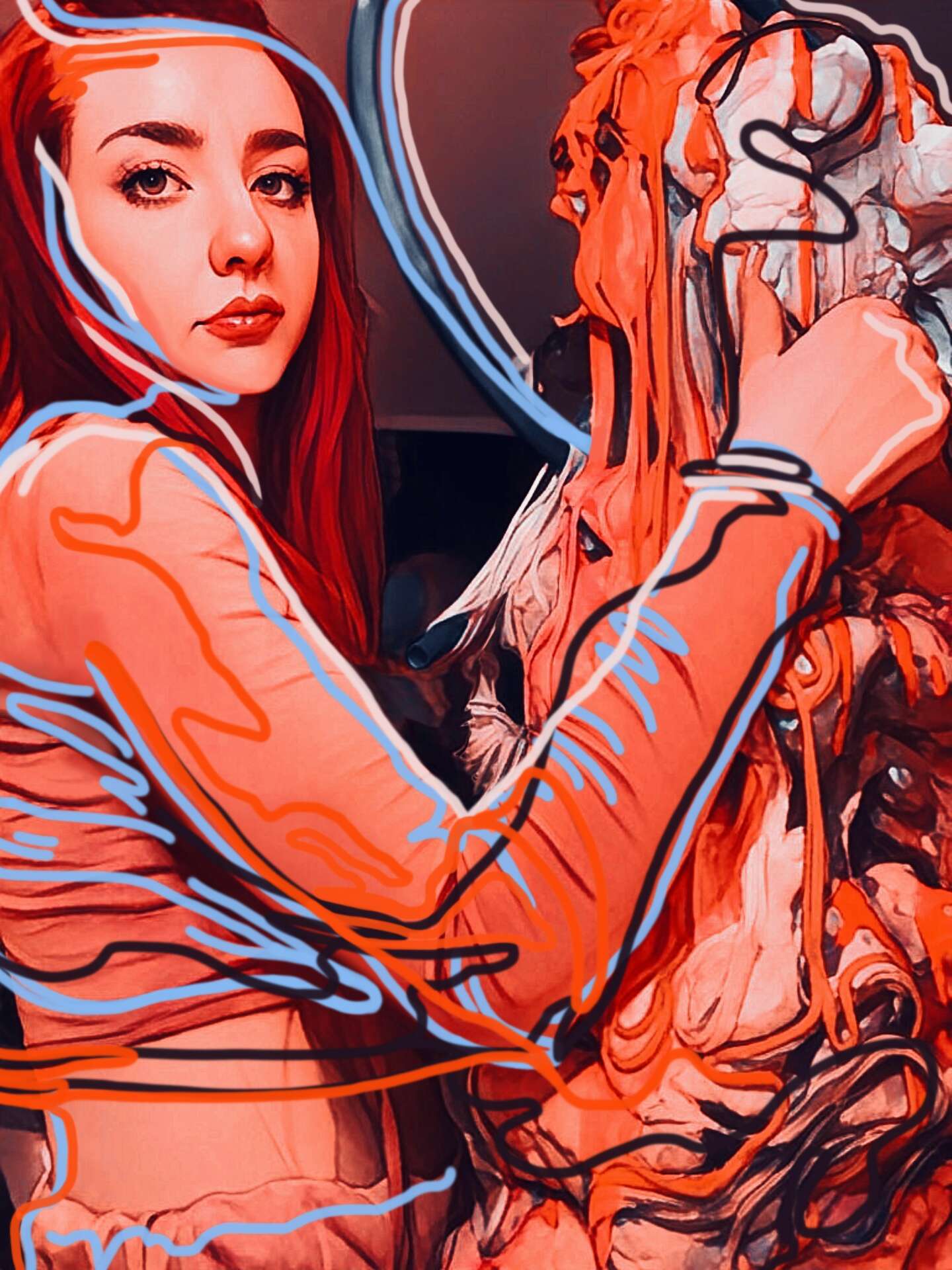We caught up with the brilliant and insightful Ms. Sparker a few weeks ago and have shared our conversation below.
Ms. Sparker, thanks for joining us, excited to have you contributing your stories and insights. When did you first know you wanted to pursue a creative/artistic path professionally?
I loved drawing and painting when I was little, but it didn’t occur to me that it could be a solid career path choice until somewhere around junior year of high school. The summer of 2006, I left my bubble in the Chicago suburbs to stay a few weeks in the dorms at the Milwaukee Institute of Art and Design. They were hosting an annual pre-college program, which sounded like a pretty solid way to learn some new technical skills and potentially make new friends. I was excited to get away from home and flex my newfound independence as a 16 year old kid. The course I enrolled in was Printmaking and Drawing with Rina Yoon and Waldek Dynerman. Several important things happened in and around that classroom:
1.) I was pushed to free up my approach in drawing (my friend Arthur and I distinctly remembered our professor not allowing erasers, which was super interesting, and then there was another time we were challenged with drawing a still life set inside a cage)
2.) I learned about the art of printmaking, which is vastly different from what I thought it might be (Rina had us dive straight into the depths of intaglio and I fell in love)
3.) I was exposed to real art making facilities for the first time ever (hello, giant litho press!)
4.) Everything was new– the spaces, museums, galleries, people. I learned and I partied of course (hello, 80’s dance party!), took risks probably going places we shouldn’t have been, and for the first time ever I was able to just sink myself into a studio, staying up all hours of the night in the print shop and learning from their grad students who would come in after hours.
5.) I learned there was a proper way to treat art in some respects, and that I really could take myself seriously as an artist (that seriousness which helped me in the beginning though, I later had to unravel to expand my creative approach, so it’s a two-sided coin)
When I came back home, ready to start my senior year, I was talking endlessly about going to college to study art, a shift from the advertising degree my parents were encouraging me to pursue. When I finally landed on the doorstep of my alma mater, it took exactly two weeks for me to change my major from advertising to fine art. I never looked back.
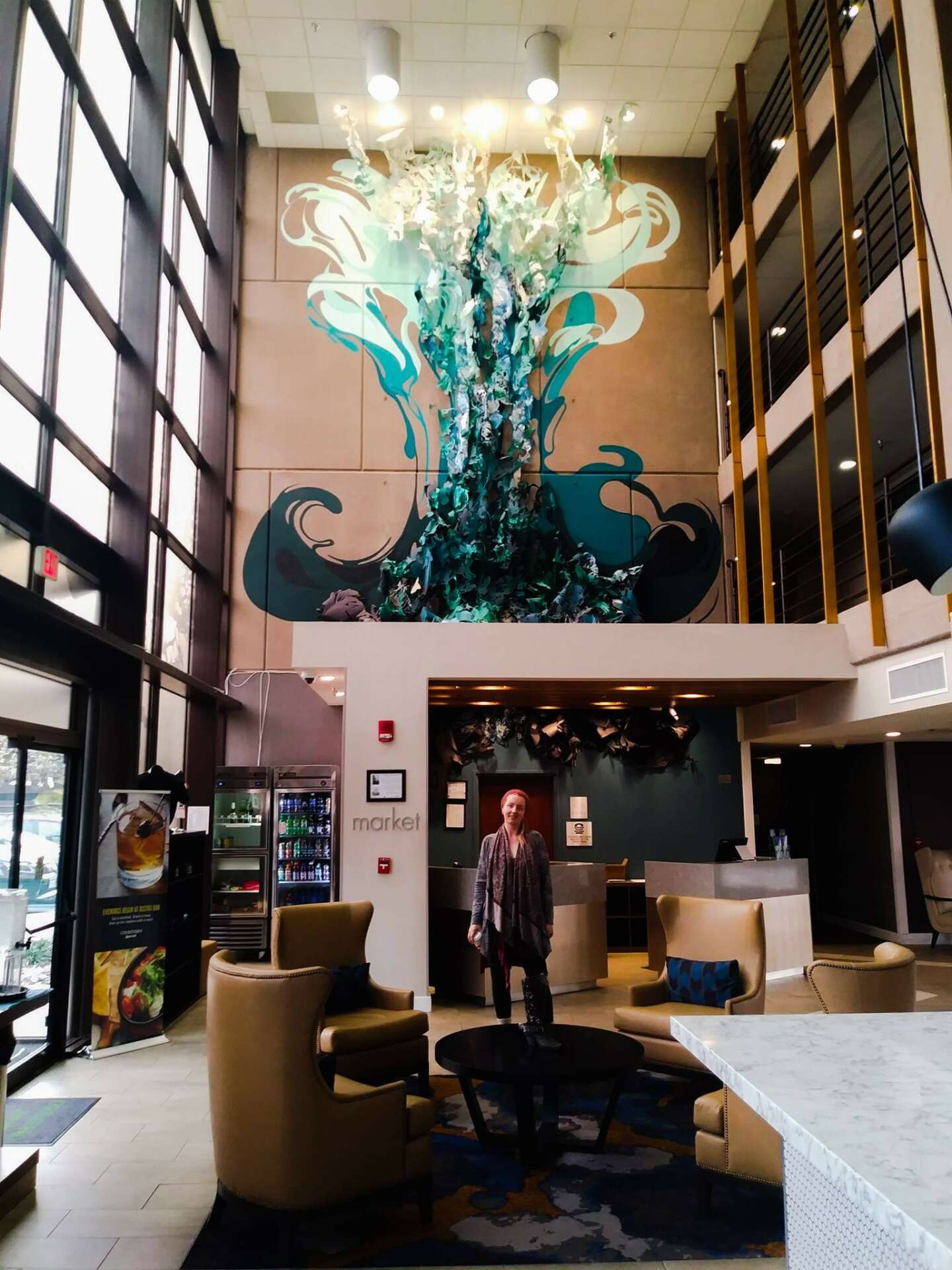

Ms. Sparker, before we move on to more of these sorts of questions, can you take some time to bring our readers up to speed on you and what you do?
Ms. Sparker (Sam Parker) is currently located in Chicago, Illinois. She creates large-scale linear abstract installations and sculptures from an array of materials that are often donated by the public and then recycled into art. Commonly-used items include: construction cones and fencing, paper, plumbing conduit, rope lights, PVC sheets, wood, wires, and paracord. She has been included in permanent public and private collections at venues such as the Courtyard Marriott Hotel, Woodbourne-Centerville Public Library, Seismique Museum, and Texas Tech University. Select exhibitions include the Museum of Contemporary Art Jacksonville, Memorial-Sloan Kettering Hospital, Cincinnati Symphony Orchestra, Till Richter Museum, Hunterdon Art Museum, Arthaus Projects, Art + Lit Lab Madison, and various academic institutions including Xavier University, Binghamton University, The Ohio State University, California Lutheran University, University of Southern Mississippi, and others. Her outdoor sculptures have been shown in sculpture gardens and as public street art.
Recent awards include a 2020 Andra Tutto Bene grant sponsored by NinedotArts, an honorable mention for her work in the show RePurposed, 2019, at ArtHaus Projects, a 2019 Ringholz Foundation Award, 2017 ArtPrize Nine Seed Grant, 2017 Greater Columbus Arts Council AITC Grant, 2017 Columbus Arts Festival Emerging Artist Grant, a 2016 Art Kudos Merit Award, and a 2014-15 John Fergus Post-MFA Fellowship at the Ohio State University.
In addition to large-scale sculptures, Ms. Sparker creates smaller hanging wall sculptures and custom jewelry made from her upcycled installation materials. To see this, plus her original merchandise, visit the shop at www.sparkerstud.io/shop
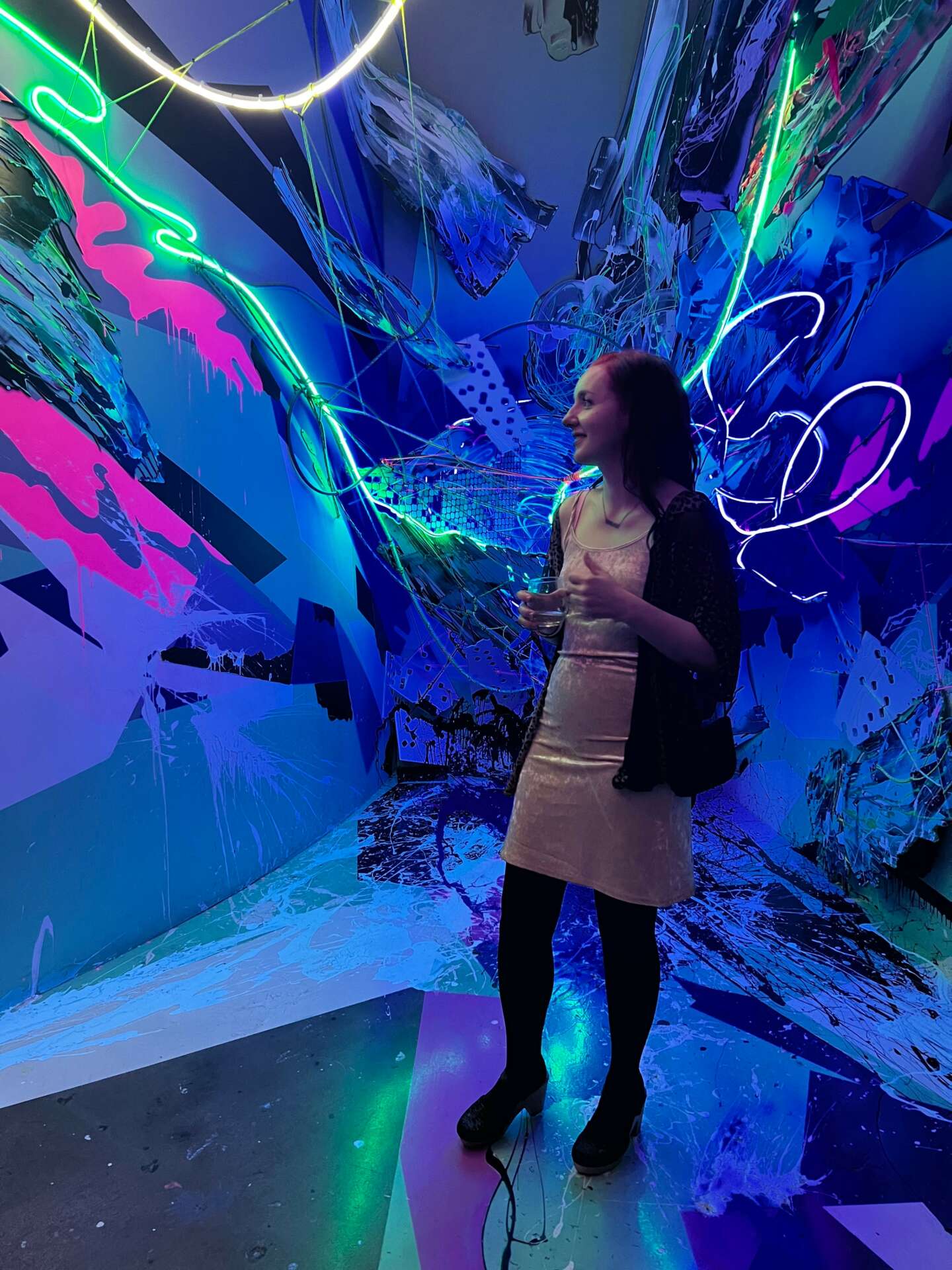

Let’s talk about resilience next – do you have a story you can share with us?
I finished high school when I was 17, jumping straight into undergrad and then again into grad school. Since I was little, I was used to basically always being the youngest and somehow also the tallest girl in my class each year. So here I was, awkward and 21, having no clue about life other than that I loved making art, showing up on the steps of one of the greatest American universities without an ounce of awareness as to the figurative ass-whooping I was about to take there. I was, by far, the youngest MFA candidate in the department at the University of Texas during that time (2011-14), a fact I wouldn’t even become aware of until I walked into the room on orientation day and looked at the pursed lips and squinting eyes around me. Everyone seemed to be sizing each other up.
I don’t remember feeling intimidated before that, at least not when it came to art.
This wasn’t about art anymore though, it was about Art with a capital A, existing in the UT bubble that was Austin, TX. It was a different version of the type of creativity I was used to: It became one where we were pitted against each other in constant competition, where your peers or professors would ask impossibly tough questions during critique and watch in utter amusement while you stumbled over an answer (will she flunk out this time?).
Was the Art Real enough? (whatever that means)
Was it authentic enough?
…and who exactly is your audience?
What’s the importance of ____ (insert any minute detail here)?
Are you aware of ____ (list inevitable and unsolicited artist recommendations)?
Et cetera
I never knew about Fellowship Day before getting there, which is basically a fancy way of saying Money Day because it’s the day each year (or was it each semester?) where we would each have to fill our respective studio spaces with our current work, creating some kind of pretentious display whether finished or unfinished, and leave the building for the day so that all the professors could walk around ranking us from first to last. The higher up you were on the list, the more money you got, and the money was attached to a fellowship title, so eventually we all knew where we landed amongst the others. It seemed that, regardless of where you were on that spectrum, it was a nerve-wracking and humiliating experience because is felt like a popularity contest more than anything. Getting in good with the professors meant getting more money, and there’s no denying that. I don’t honestly remember where I fell, maybe somewhere in the middle, but the point is that it was highly divisive. Some of us who felt bullied eventually found each other, and we would whisper in the halls about our experiences. We later called ourselves Champions of the Underdogs (you know who you are). I can only hope that since then they have found a better way of doing things there.
Anyway, all of this banter and competition sucked the fun right out of my studio practice at the time, along with the whimsy and color. Mainly, my work and ways of thinking about my work became too serious for a while. I didn’t realize it right away because I thought the competition would be good for me, and now I actually think in some ways it was. I had to toughen up during that time, especially once my daughter was born, and that was right in the middle of graduate school. That process put some tough skin on my back, and it follows me to this day. Whenever I get down on myself, I often think of how I made it through the UT days miraculously with a diploma.
A final anecdote on this topic:
I was on the last leg of install for our senior thesis show, and I was set to make an installation that spanned the first and second floors of the central gallery space vertically. You could see it when entering the massive Visual Arts Center at UT, and again from the top floor as soon as you turned off the staircase. It was made mostly of hand-printed and collaged sheets of BFK Rives paper, but also included a generous amount of caution tape, plastic sheets, chicken wire, and found branches that I had painted to use in the installation. The top of the piece loomed over viewers–it was called Leukos-Haima, a visual expression of my experience with a close family member dying of leukemia. I had already run a test version of it for my oral defense that had been much smaller and stuck out from the wall with 10-ft plexiglass rods anchored into the drywall. The version for our senior show was twice as tall and dense as the first rendition, and I had partnered with their install crew to come up with a whole suspension system using monofilament to make it work. It was my first time doing a suspension, too, so there was a lot of research and development that went into it. I was about three or four days into install and getting ready to wrap things up when my graduate advisor approached me (I’ve omitted her name out of respect) and asked if I could meet with her outside. She didn’t pull me out of the gallery, but literally outside, all the way to a bench in front of the building just to ask me the following question (I kid you not):
“I’ve been looking at your piece and just thinking, wouldn’t it be better if we took out all the branches so it was just the shadows you painted on the wall? I think it’s distracting too much from the other work in the exhibition.” And it was distracting, in a too-good sort of way. I felt all the tension built up inside me from years of having to defend my work in that place, and just simply said no, without hesitation, that I thought it was perfect just the way it was. Believe it or not, she dropped the topic after just a few minutes of trying to convince me. She must have thought I would die on that hill defending my work, which I always will now.
That goes down as one of the most important moments in my career because of what happened a couple weeks later.
I got a phone call one morning from a number in Denver–it was an art consultant named Kathryn who had seen my installation in that senior show while she was visiting Austin to recruit potential artists for a corporate client. The consulting firm she was employed with landed me my very first significant permanent commission. Based on what she had seen of Leukos-Haima at UT, Kathryn thought I would be a perfect fit to create a central piece for the lobby of the Courtyard Marriott in downtown Austin. It was to span floors 1-4 and it was suspended directly above the lobby desk. That project, called Equidistant, was pivotal. It placed me on the map for that type of professional installation work at a very young age. The Marriott commission, coupled with my invitation to teach at The Ohio State University on a one year resident artist contract, meant my career was suddenly put into overdrive. I couldn’t have been happier.
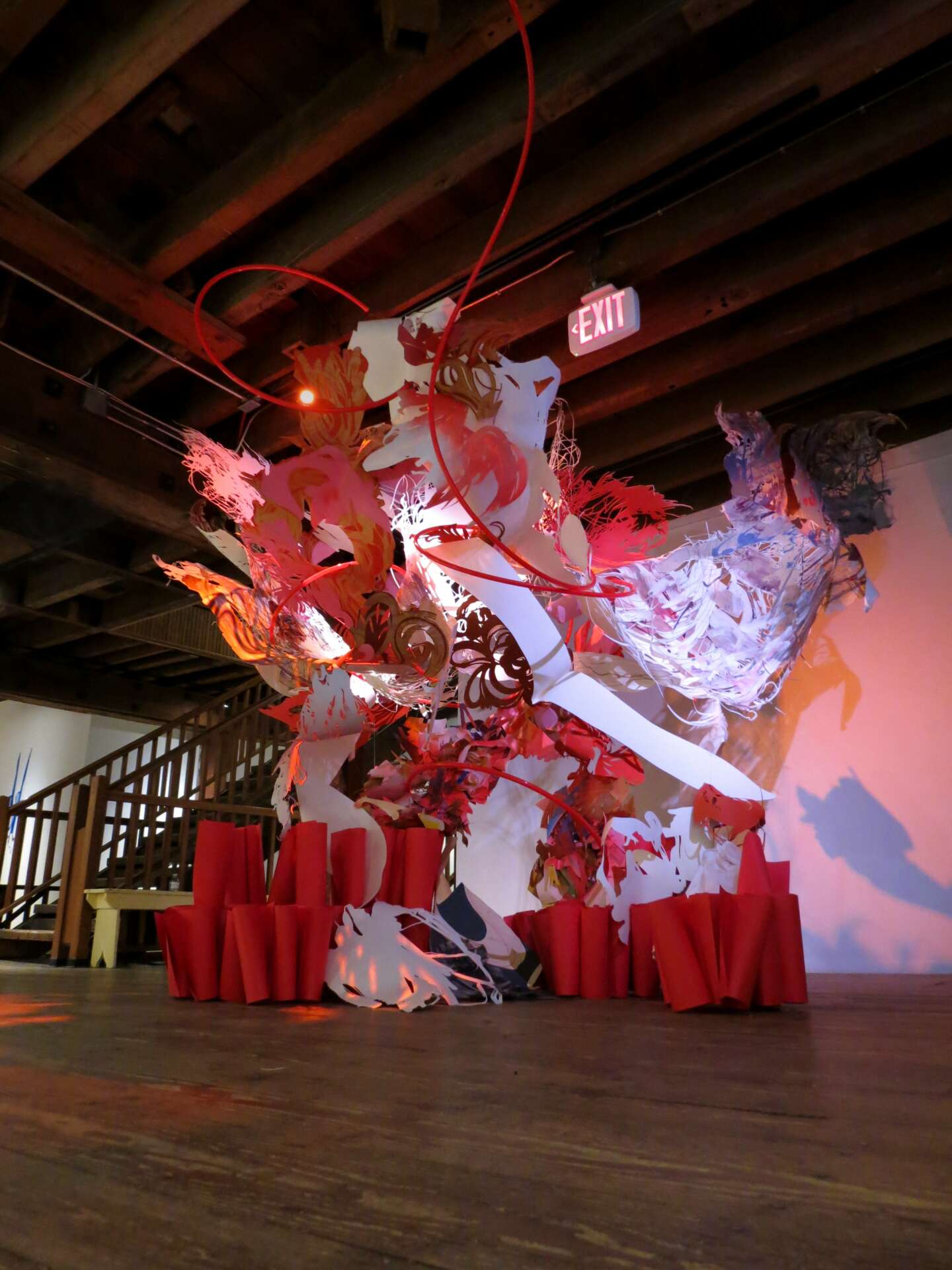
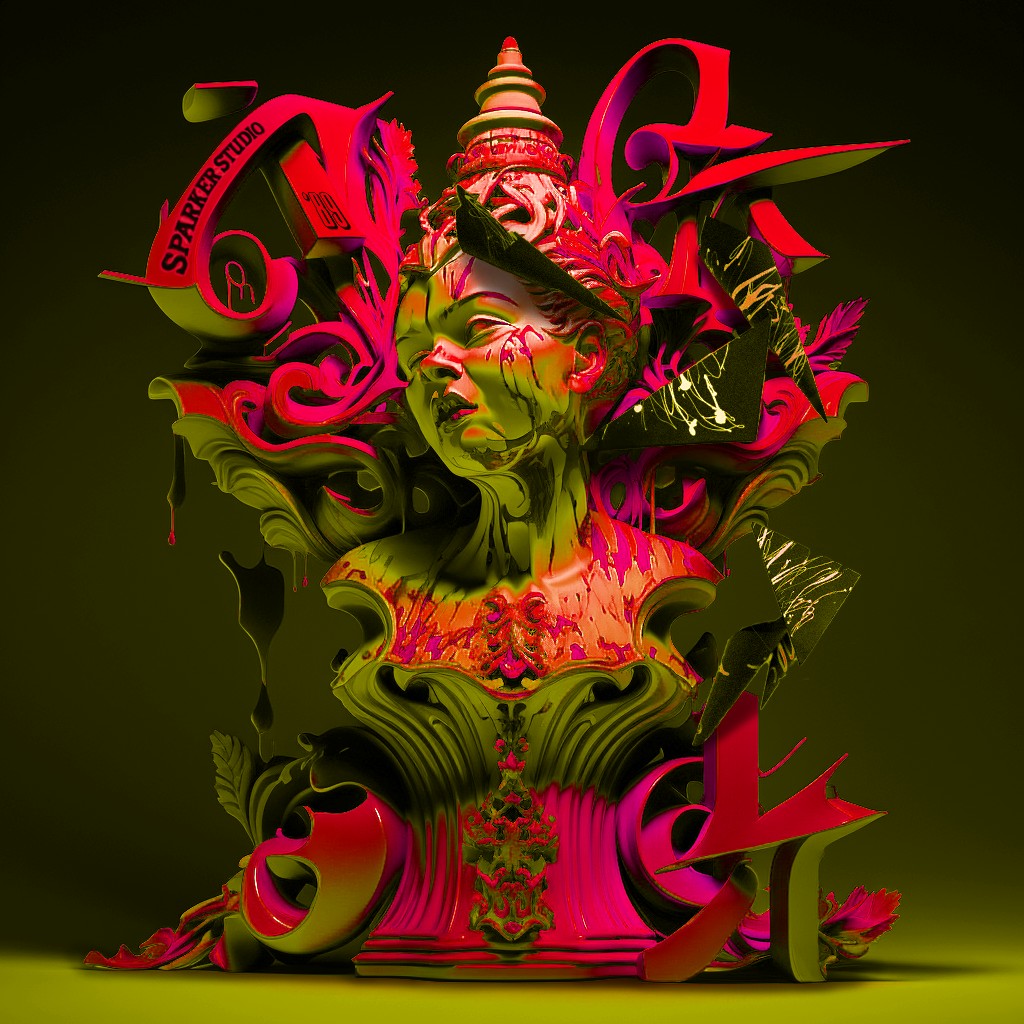
What can society do to ensure an environment that’s helpful to artists and creatives?
There are so many ways to support your favorite artists! First, and I think the most obvious is to buy their work. Whether that is something small or large, or by becoming a monthly patron, whatever fits your budget. It is mutually beneficial, because you will end up owning something unique that has a chance of appreciating in value over time, as art usually does, and the artist can continue to make a living through your financial support. You also have the comfort of knowing your money went to an actual person and not a large corporate entity.
Another way to support artists is to comment, like, and share their work on social media while always giving them proper credit. I hate to see when an awesome image or video goes viral without any mention of the artist. Social media exposure is highly valuable these days so that would be a missed opportunity for a deserving artist.
Going to open studio events, gallery openings, and other events linked to the artist is also a form of support and can give you a much better idea of what that person is creating off-screen.
Donations to the studio are also great– if you notice that an artist uses certain paints or other materials, maybe you are cleaning out an old closet and instead of taking them to a donation center or throwing away, reach out to donate to a local artist.
This is not an exhaustive list, as I am sure there are other ways I haven’t even considered!
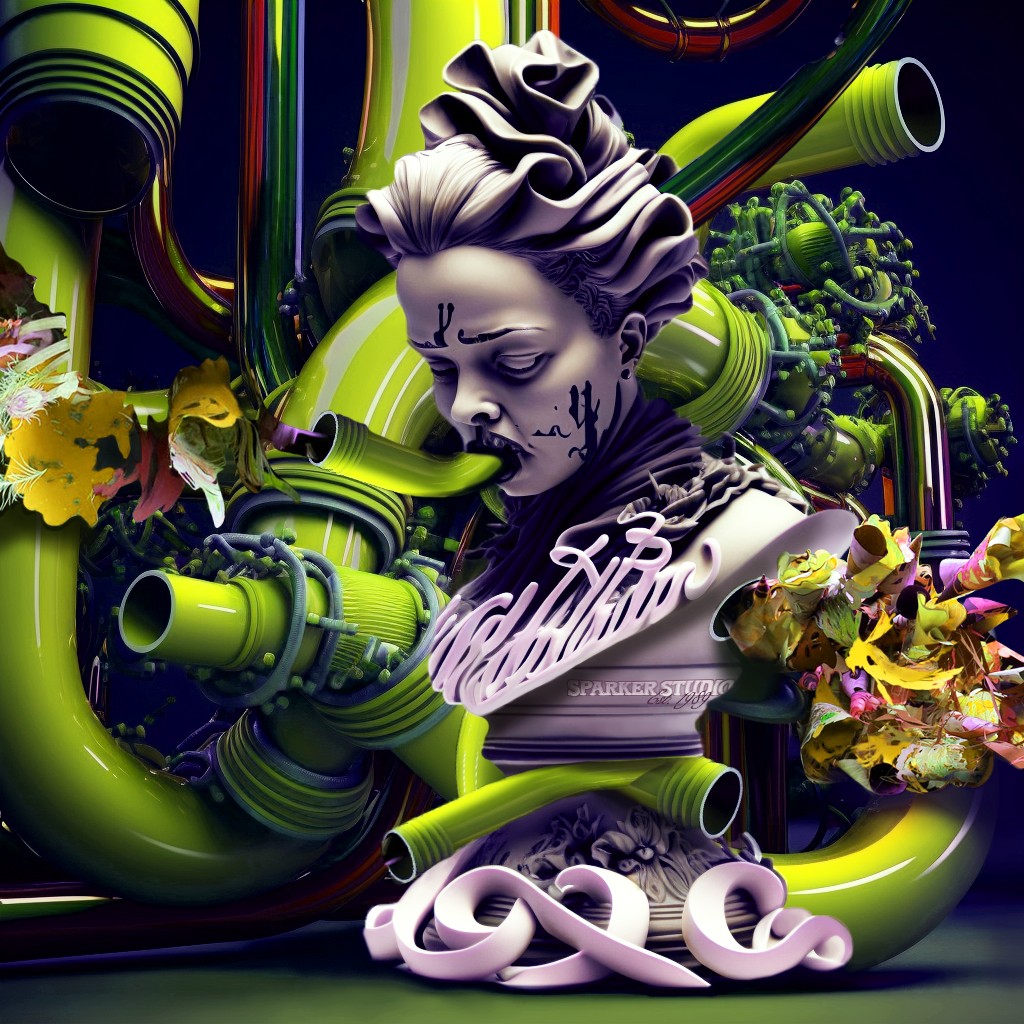
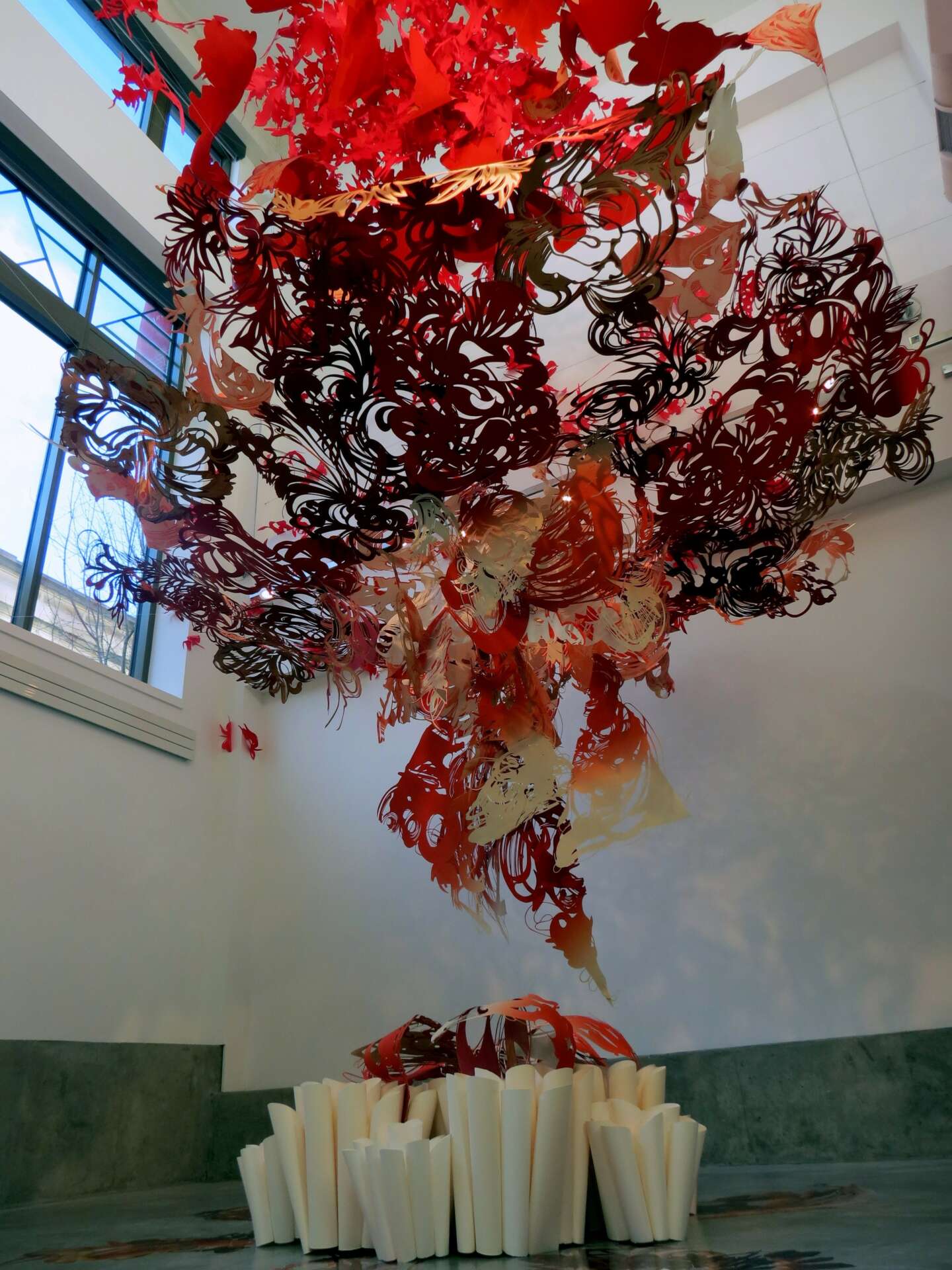
Contact Info:
- Website: http://www.sparkerstud.io
- Instagram: @ms.sparker
- Facebook: @SparkerStudioUSA
- Other: http://www.sparkerstudio.threadless.com


